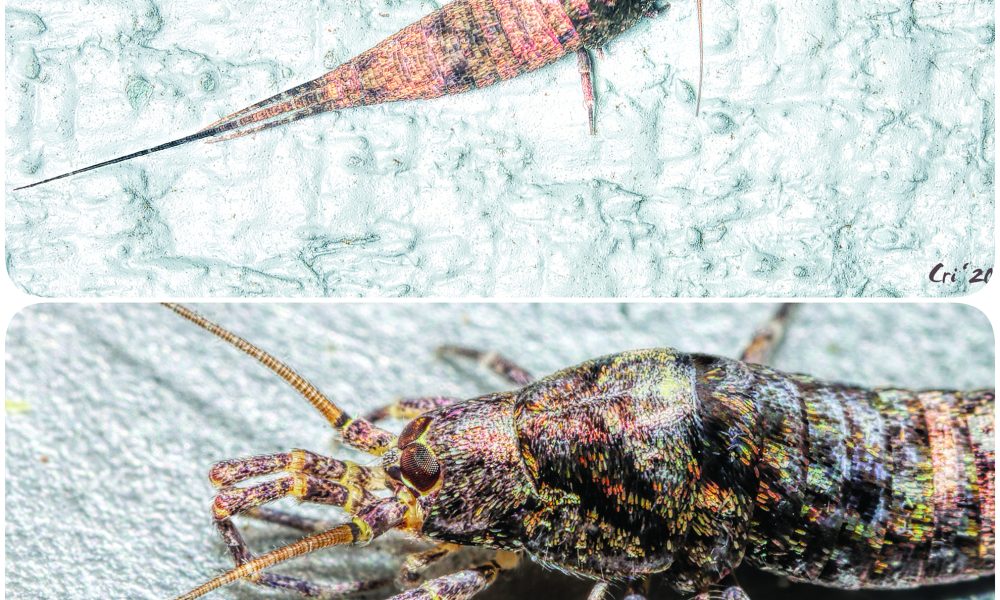
Don’t panic. This week’s crawly is not a silverfish. This week we revisit the bristletail (Order Microcoryphia) who we briefly met in 2016. It’s time to take a deeper look at these awesome, ancient critters.
At about one inch in length, bristletails look like silverfish on steroids (silverfish are about one half the size of bristletails). The two crawlies aren’t even closely related. Bristletails are in the Order Microcoryphia, while silverfish are in the Order Zygentoma.
As an example, horses are in the Order Perissodactyla while cows are in the Order Cetartiodactyla. Orders parse out some key differences in animals, even if they seem similar visually.
For all that, if you Google “bristletail” you’ll get as many or more websites about silverfish as actual bristletails. Good thing you don’t get similar mixed up search results with cows and horses!
To be fair, it used to be thought that bristletails were more closely related to silverfish. Also, the “bristletail” nickname (AKA “common name”) is used for a few different arthropods. Cases of mistaken identity are bound to happen.
Bristletails live outdoors and have no desire to be indoors. If you happen to find one inside, they are looking for a way out, so help them out with a cup and paper. Heads up, though! They can hop up to four inches forward by snapping their abdomens on a hard surface. This helps them evade predators such as spiders and centipedes.
Their jumping ability also helps them move around rocks and even jump from one tree to another in search of the tastiest lichen. While in the air, they use that long central “tail” filament to steer them in the desired direction.
Bristletails’ scientific name, Microcoryphia, comes from the Greek mikros, or ‘small’ and koryphe, or ‘head’. It’s fair. They do have small heads, but very large compound eyes. Those big eyes come in handy because bristletails are usually active at night. They walk and hop around munching down on algae, mosses, lichens or decaying organic matter. With that diet you can see they are beneficial insects and keen little garden helpers. They help break down and recycle important nutrients in soil.
Bristletails’ beautiful rainbow shimmer comes from their refractive scales. Those scales can wear off over time and a more “world weary” bristletail would look tanner in color.
Speaking of age, bristletails are one of the oldest arthropods on earth. The earliest known fossil of a Microcoryphian is from the Lower Devonian period (419 million–393 million years ago). These amazing arthropods fit their niche so perfectly they’ve been doing so for millions of years. Some scientists consider bristletails to be the least evolutionarily changed insects of all. Practically perfect in every way.
They’re so perfectly built for their life, they don’t change in appearance as they grow, except to get larger. They hatch out of their eggs as perfect mini bristletails. Over the next two to three years, they shed their exoskeletons and grow up to their full one-inch size.
Fun fact: Bristletails are unique in the way their mandibles (chewing mouthparts) attach to their jaw. They have a single (monocondylic) joint/articulation that allows their mouthparts to rotate/twist.
So, if you’re lucky enough to spot one of these hoppy fellows in the daytime, appreciate their perfection and give a quick “thanks!” for the work they do helping our forests, flowers and food grow.

